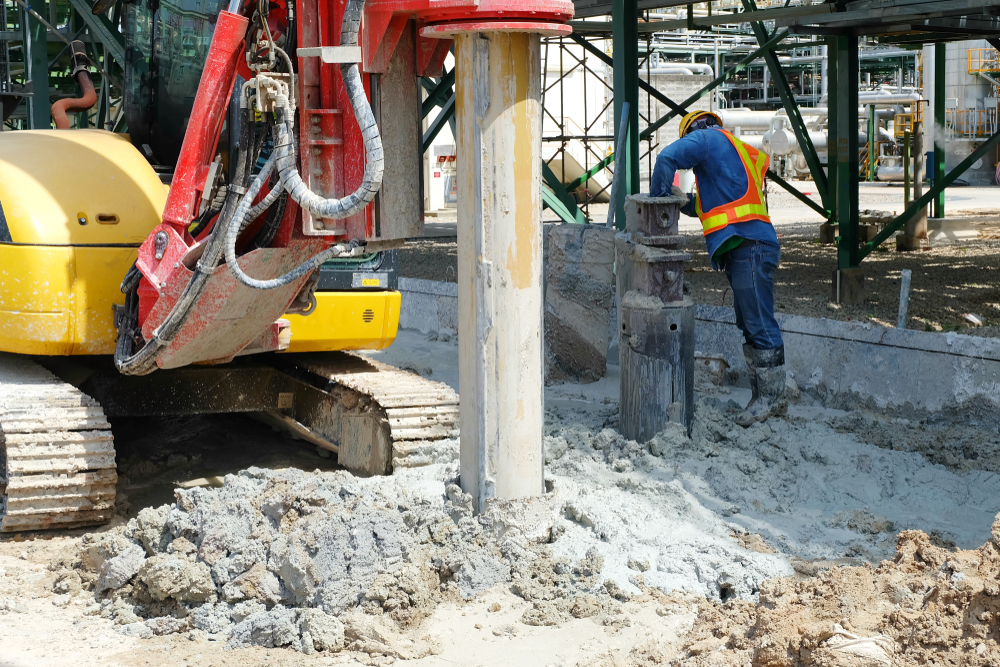Geotechnical Engineering For Construction Projects Fundamentals Explained
Geotechnical Engineering For Construction Projects - The Facts
Table of ContentsThe Best Guide To Geotechnical Engineering For Construction ProjectsGeotechnical Engineering For Construction Projects - An OverviewHow Geotechnical Engineering For Construction Projects can Save You Time, Stress, and Money.How Geotechnical Engineering For Construction Projects can Save You Time, Stress, and Money.How Geotechnical Engineering For Construction Projects can Save You Time, Stress, and Money.Geotechnical Engineering For Construction Projects Fundamentals Explained
The duty of geotechnical design dramatically takes care of understanding the attributes of dirt and rock, which may vary considerably by their thickness, wetness material etc. These attributes need to be taken a look at by geotechnical designers to anticipate their motions under various circumstances. The safety along with stability of frameworks are impacted by soil conditions, making this analysis necessary., in enhancement to how they engage with constructions that have been erected on or within them, is one of the main descriptions for why geotechnical engineering is crucial.
Along with structural preparation and building, geotechnical design is additionally important to the repair and upkeep of pre-existing structures. Age-related deterioration or added troubles can influence a framework's security and performance. Environmental management is accomplished through geotechnical engineering. Experience in air, water, and soil top quality upkeep is used by geotechnical engineers to lessen the unfavorable effects of tasks.
Facilities development, offshore engineering, passage building, and deep structures. Risk-based style and multidisciplinary teams. These parts will certainly maintain the field developing and ensure its continued relevance in the years ahead. To summarize, geotechnical design is an important discipline that preserves the durability and stability of civil facilities. Geotechnical engineers add to making structure jobs reliable throughout the world by comprehending the practices of planet materials and applying ideal preparation strategies.
Not known Details About Geotechnical Engineering For Construction Projects
The foundational security of any job is vital. Geotechnical design plays a vital duty in ensuring that structures are improved strong ground, literally and figuratively. By taking a look at dirt, rock, and subsurface problems, geotechnical engineers offer important understandings that aid in the design, construction, and maintenance of buildings and framework.

The Greatest Guide To Geotechnical Engineering For Construction Projects
Research laboratory screening: Figuring out the residential properties of dirt and rock. A number of high-profile building and construction jobs have actually efficiently used geotechnical engineering to guarantee their security and safety.

As a leader in geotechnical design, BECC Inc. is devoted to providing cutting-edge and efficient options that meet the highest possible requirements of quality and safety. For more details on just how BECC Inc. can sustain this contact form your next building job, call us today and let us help you improve solid ground.
William Rankine, a designer and physicist, established an alternate to Coulomb's planet stress concept. Albert Atterberg established the clay uniformity indices that are click here now still made use of today for dirt classification. In 1885, Osborne Reynolds recognized that shearing reasons volumetric expansion of thick materials and tightening of loose granular materials. Modern geotechnical engineering is said to have actually started in 1925 with the magazine of Erdbaumechanik by Karl von Terzaghi, a mechanical engineer and geologist.
How Geotechnical Engineering For Construction Projects can Save You Time, Stress, and Money.
Terzaghi also established the structure for concepts of birthing capability of structures, and the theory for prediction of the price of negotiation of clay layers as a result of debt consolidation. After that, Maurice Biot totally created the three-dimensional soil debt consolidation theory, prolonging the one-dimensional model previously developed by Terzaghi to a lot more general hypotheses and presenting the set of fundamental equations of Poroelasticity.
Geotechnical engineers explore and figure out the residential properties of subsurface problems and products.
The Only Guide to Geotechnical Engineering For Construction Projects
, which uses a thick-walled split spoon sampler, is the most common means to gather disturbed samples.

Commonly, the user interface's precise geometry is unknown, and a streamlined user interface geometry is assumed. Limited slopes need three-dimensional models to be assessed, so most slopes are examined assuming that they are definitely large and can be represented by two-dimensional versions.
A Biased View of Geotechnical Engineering For Construction Projects
Producing the layout based on a working hypothesis of behavior prepared for under the most potential problems. Selection of quantities to be observed as construction proceeds and determining their expected values based on the functioning theory under the most negative problems.
Dimension of quantities and evaluation of real conditions. It is unsuitable for tasks whose style can not be altered throughout building.